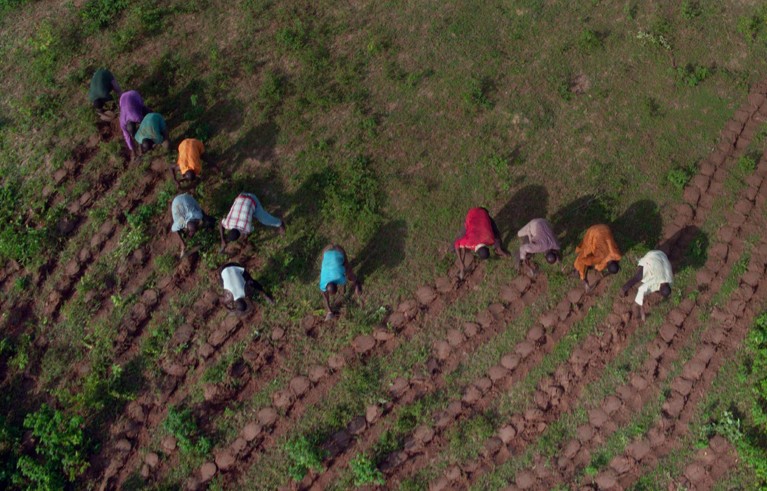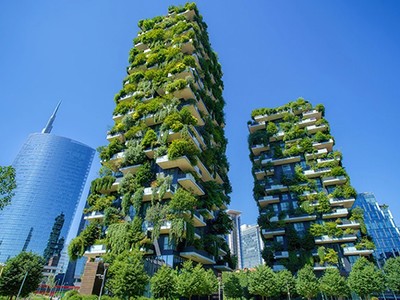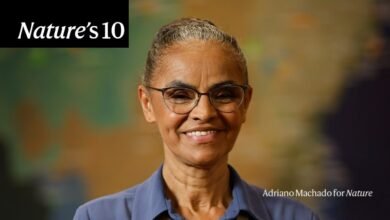Why repairing forests is not just about planting trees

Treewilding: Our Past, Present and Future Relationship with Forests Jake Robinson Pelagic (2024)
Trees first appeared around 400 million years ago. They survived the mass-extinction event that wiped out the dinosaurs some 66 million years ago and lived through several glacial periods during which ice covered up to one-quarter of Earth’s land. Now, they face another threat: humans.
Since the birth of agriculture, people have been clearing forests to make space for crops and livestock. Over the past 300 years, 1.5 billion hectares of forest have been lost — equivalent to around 37% of today’s total forest cover. This has resulted in biodiversity loss, desertification and increased flooding risks. Deforestation has also been linked to an increased chance of disease outbreaks, because people come into contact more often with animals, such as bats, that carry potential pathogens and whose habitats have been destroyed.
In Treewilding, microbial ecologist Jake Robinson explores how we can best protect existing forests from deforestation and restore those that have been lost, while acknowledging that some degree of deforestation is inevitable. His meticulous explanations and vivid descriptions make this book a must-read.
Greener cities: a necessity or a luxury?
Robinson questions whether just planting trees is the solution to deforestation. Although tree-planting initiatives have been going on since the Second World War, they have exploded since the turn of the century. The public has become increasingly aware that trees can help to prevent soil erosion and desiccation, and are crucial to mitigating climate change by sequestering carbon. Globally, the area of planted forests rose from 170 million hectares in 1990 to 293 million hectares in 2020. Tree-planting initiatives are used by many organizations to ‘greenwash’ their high carbon footprints — making them seem environmentally friendly when they are not. However, unless thoroughly researched and well implemented, tree planting can do more harm than good to ecosystems.
Often, only one type of tree is planted across swathes of land. Such monocultures reduce biodiversity, in terms of plant species and the wildlife and microorganisms associated with them. Because trees of the same species are susceptible to the same diseases, a whole forest can be wiped out at once. Moreover, non-native trees can be invasive species, disrupting delicately balanced local ecosystems.
Regenerate forests to restore them
To solve rather than compound environmental crises, Robinson argues, a more informed approach is needed. Regulators must understand the deep connections that trees and forests share with people, animals and microbes.
He speaks to Forrest Fleischman, a scholar of forest and environmental policy, who underscores how Indigenous peoples depend on forests for subsistence farming and grazing animals. High-income countries contribute the most to climate change, yet tree-planting initiatives risk unfairly displacing Indigenous people in low-income countries, says Fleischman. He proposes that people should not just plant trees but ‘grow’ them. This means knowing what species suit an area and how they are connected to the lives of the local people and wildlife. Growers should make use of local knowledge and spend time and money caring for young trees.

The Great Green Wall project aims to reforest a belt of land across the Sahara desert.Credit: TCD/Prod.DB/Alamy
Robinson details a range of forest-restoration projects that fit this brief. The ‘Great Green Wall’ project, for instance, aims to grow a belt of trees nearly 8,000 kilometres long and 15 kilometres wide across the Sahara Desert, along a route that was forested 50 years ago. If successful, it could prevent the southward expansion of the desert by reducing land degradation; increasing the amount of arable land, the crop yield and the availability of jobs; and sequestering millions of tonnes of carbon. Several million trees have been planted since 2007. But funding has dried up, and the author cautions that more money must be found if the Great Green Wall is to succeed.
Another admirable restoration project is Western Australia’s Gondwana Link, which aims to reduce vegetation loss by reconnecting small patches of previously linked forest across 1,000 kilometres. This should help species at risk of extinction in isolated patches to endure. It could increase the chance of survival for birds, such as the Australasian bittern (Botaurus poiciloptilus) and hooded plover (Charadrius cucullatus), and plants, including the Corackerup marlock (Eucalyptus vesiculosa). When populations that are currently separated can intermix, their genetic diversity is improved. This can help to protect them against environmental adversity. Since 2002, the project has planted 14,500 hectares of land, funded in part by investors who receive carbon credits or tax exemptions in return.
The author also describes his own work in ecoacoustics. The approach uses the sounds made by organisms including birds and bats to explore the composition of and changes in ecosystems. Working with bioacoustics specialist Carlos Abrahams, Robinson is studying soil biodiversity to track forest restoration. As forests are rejuvenated, they’ve found, the number of invertebrates hidden in the soil increases, producing a “subterranean soundscape — a hidden orchestra of life”.
Wood — the vein that runs through human history
Robinson ultimately concludes that natural regeneration — leaving a damaged woodland to repair itself — is one of the best ways to restore forests. He compares this phenomenon to a phoenix: “Just as the mythical bird is reborn from its own ashes, a forest can regenerate from the remnants of its own destruction.”
I was hooked by Robinson’s ability to paint rich pictures of beautiful scenery. Arriving at a restored forest on a limestone cliff in the Peak District, UK, for example, he sees “a vast sea of greater knapweed glancing down at me from the edge like floral guardians in a watchtower”. The soil underfoot is “a bed of compressed and mineralised marine creature skeletons from bygone eras”.
And I enjoyed the thought-provoking questions raised throughout. For instance, to what extent can people alive today understand what the baseline state of the environment should be, given how rapidly human activity is changing the world? And how do jays (Garrulus glandarius) — voracious acorn eaters — understand that they need to set aside some nuts to help to regenerate the oaks they depend on for nutrition? The birds probably simply forget that they’ve hoarded caches of food, but Robinson speaks to several scientists who have found evidence that hoarding is an intelligent, rather than hard-wired, behaviour. This exploration exemplifies the author’s ability to avoid bias as he explores delicate subjects, despite his clear passion for them.
Treewilding effortlessly integrates current theories with fresh insights and consolidates strands of research into a coherent narrative that should encourage researchers to come up with better ways to help forests. It is an enlightening journey for anyone interested in the science of nature.
Competing Interests
The author declares no competing interests.








